text: Alexander Koch
translation: Gerrit jackson
fotos: Ladislav Zajac
I don’t want to. I can’t. I mustn’t! Not now. Maybe I’ll come back to it tomorrow. We’re perpetually compelled to postpone what we would want, should do, might wish for. Acting hasn’t felt like this in a long time: like an uncertain proposition that’s presumably inappropriate just now and may well be just as inappropriate the day after tomorrow.
Ich will nicht. Ich kann nicht. Ich darf nicht! Nicht jetzt. Vielleicht morgen wieder.
Ständig müssen wir aufschieben, was wir wollen würden, tun müssten, wünschen könnten. Das Handeln hat sich lange nicht mehr so angefühlt wie eine ungewisse Tätigkeit, die gerade jetzt mutmaßlich unangebracht ist und übermorgen vielleicht ebenso.
Perhaps you’re at home. Perhaps the kids are getting on your nerves. Perhaps you’re sitting all alone in a gallery and have no idea what you should actually make plans for. Perhaps you’re not even getting replies to your emails anymore because people have wandered off somewhere beyond reach. An island life. And inside your head, ideas are starting to hunker down in the same places where they were perched yesterday and you shoo away the cobwebs between them.
KOW presents Sophie Gogl. It’s her first exhibition with KOW, scheduled to open for the 2021 Gallery Weekend. We talk on the phone. There will be fourteen tondos to be hung. She’s obviously going to come to Berlin from Vienna to hang them, she says. Tondos are circular canvases, and these are painted on both sides and will be suspended from the ceiling instead of being bolted to the wall the way paintings more typically are.
She has epistulaphobia, she says on the phone, and I ask whether that’s a virus. No, she says. It means that you’re scared of letters. I simply can’t open them, Sophie says, and I think: Yes. Bad news. Most of them are about money. There are so many things I keep kicking down the road, she says, and I nod quietly. And then you open the fridge and take out a jar of jam, you unscrew the lid and stick your knife into a cushion of green mold, Sophie says, because the jam has been sitting there, unnoticed, for months and now it just can’t keep going on, its willpower is spent, and so it’s embarked on a life of its own.
The front sides of her tondos, which measure 90 cm, are diligent replicas of jam and honey jar lids. The first was the “Bonne Maman,” with that simulated checkered tablecloth on the lid, Sophie Gogl says. As though mom had filled the jar with a fresh homemade preserve and sealed it with a cute doily. That domesticity is so fake. And then you think to yourself that you’re supposed to be a bonne maman yourself, a loving mother, and make a jam sandwich for your kid, the one that if you’re honest is annoying you right now, and what you’d really like to say is: Not now. Come back for more jam sandwiches tomorrow. If we have any edible jam left by then.
Painting is kind of like that, she says. There’s the constant expectation that you do everything well and get it right, that you make good on the promise of a deliciously sweet world on the canvas. An obsolete promise that you can never live up to anyway, and at some point you lose interest in even trying. And as a viewer, I second her, my gaze on the picture is laced with bitterness: Come on, show me the world! And painting says: Kiss my ass, get back to me tomorrow. What you’re left with are surfaces of honey glazing and wet cotton candy that taste bitter when you nibble them.
Vielleicht ist man zu Hause. Vielleicht gehen einem die Kinder auf den Wecker. Vielleicht sitzt man alleine in der Galerie und hat keine Ahnung, was wirklich zu planen ist. Vielleicht bekommt man auch gar keine Antworten mehr auf seine Emails, weil die Leute irgendwo verschwunden sind im Off. Inselleben. Und im Innern beginnen die Gedanken an der gleichen Stelle hocken zu bleiben, wo sie gestern schon hockten, und man verscheucht die Spinnweben zwischen ihnen.
KOW zeigt Sophie Gogl. Ihre erste Ausstellung bei KOW, zum Gallery Weekend 2021. Wir telefonieren. Es werden 14 Tondi sein, die zu hängen sind. Natürlich werde sie zur Hängung aus Wien nach Berlin kommen. Tondi sind kreisrunde Leinwände, in diesem Fall beidseitig bemalt und also werden sie von der Decke herabhängen statt an die Wände geschraubt zu sein, wie es üblicher ist für Malerei.
Sie habe Epistulaphobie, sagt sie am Telefon und ich frage, ob das ein Virus sei. Nein, sagt sie. Das bedeutet, dass man Angst vor Briefen hat. Ich kann sie einfach nicht öffnen, sagt Sophie und ich denke: Ja. Schlechte Nachrichten. Meistens geht es um Geld. Ich schiebe dauernd so viele Sachen vor mir her, sagt sie, und ich nicke innerlich. Und dann machst du den Kühlschrank auf und nimmst ein Glas Marmelade heraus, schraubst es auf und steckst dein Messer in ein Beet aus grünem Schimmel, sagt Sophie, weil die Marmelade da seit Monaten unbeachtet stand und jetzt nicht mehr kann und auch nicht mehr will, und so hat sie ihr Eigenleben begonnen.
Die Vorderseiten ihrer Tondi, die 90 Zentimeter messen, sind säuberlich wiedergegebene Deckel von Marmeladen- und Honiggläsern. Als erstes kam die „Bonne Maman“ mit diesem simulierten Karo-Textil auf dem Deckel, sagt Sophie Gogl. Als hätte Mutti die Konfitüre frisch gemacht und hübsch häuslich ein Stoffdeckchen darübergestülpt. Das ist so ein Fake. Und dann sollst du, denkst du, selber die Bonne Maman sein, die tolle Mutter, und deinem Kind das Brot schmieren, deinem Kind, das dich in Wahrheit gerade nervt, und eigentlich würdest du lieber sagen: Jetzt nicht. Marmeladenbrote gibt es morgen wieder. Falls wir dann noch intakte Marmelade haben.
Malerei ist so ähnlich, sagt sie. Da ist dauernd die Forderung, alles gut und richtig zu machen, getrieben von dem Versprechen auf eine zuckersüße Welt auf Leinwand. Ein Versprechen, das sich eh nie erfüllt, und irgendwann hat man auch keine Lust mehr, dieser alten Verpflichtung nachzukommen. Und als Betrachter, ergänze ich, sagt mein Blick auf das Bild erbittert: Los, zeig mir die Welt! Und die Malerei sagt: Leck mich am Arsch, lass uns das auf Morgen verschieben. Was dann bleibt, sind Oberflächen aus Honigschmelz und nasser Zuckerwatte, die, knabbert man sie an, bitter schmecken.
What can wait? And at what cost? Or gain. Should I really do or see this now, do I have to, do I want to?
Was kann warten? Und zu welchem Preis? Oder Gewinn. Soll, muss, will ich das jetzt wirklich tun oder sehen?
It’s a dilemma, Sophie Gogl says. I want to paint, I really do, but we’re overstimulated anyway. Being fed a steady drip of so much visual stuff that has us on edge as it is, and then you twist the dainty lid on that jam jar and the world inside it is unpalatable. Everything’s peachy on the outside and when you turn it around it’s all crap, already over the hill or postponed until who knows when, or there’s a displacement activity that’s utterly unconnected to the issue at hand. I’m scrolling through the back sides of the tondos on the phone. Pasta is stuck in a grimy sink, something to do with comic strips and childhood, a golf course in a Nintendo aesthetic. That’s a perennial favorite, Sophie says. Gaming is a great substitute if you’re looking to procrastinate on something else. I keep scrolling and see letters composed of dry moss and little plastic flowers. An N, an O, a T, …
And so fourteen tondos by Sophie Gogl hang from the ceiling at KOW like an intimate question addressed to our own time: What can wait? And at what cost? Or gain. Should I really do or see this now, do I have to, do I want to? Do I risk mold, depression, failure if I postpone myself, my action, my gaze? Is it anarchy to simply say no to the world’s requirement profiles at this particular moment? Or is that everyday life? “Not Now,” that’s the concise formula that a synoptic reading of Sophie Gogl’s pictures, letter by letter, yields. Telling us what we’ve known for quite some time: that there’s not a whole lot of room for action right now?
No. Gogl’s “Not Now” is not corona painting for an audience paralyzed by uncertainty. Nor is it “I would prefer not to,” the philosophically tinged formulaic refusal repeated by Melville’s Bartleby. What I mean, she says on the phone, is in the end much blunter. Do I really have to do this now? Can I take a rain check? Can I do something else instead? Saying it opens up fresh intervals and interspaces of indeterminacy. And that’s where painting can take place.
Es ist ein Dilemma, sagt Sophie Gogl. Ich will ja malen, aber wir sind eh schon überreizt. Hängen am Tropf so vieler visueller Sachen, die uns eh nervös machen, und dann drehst du das schmucke Marmeladenglas auf, und auf der Innenseite des Deckels ist die Welt ungenießbar. Vorne ist alles Sahne und hinten ist alles Mist, schon vorbei oder auf irgendwann vertagt, oder da ist eine Übersprungshandlung, die mit der Sache gar nichts zu tun hat. Ich scrolle am Telefon die Rückseiten der Tondi durch. Nudeln kleben in der ungepflegten Spüle, irgendwas hat mit Comics und Kindheit zu tun, ein Golfplatz in Nintendo-Ästhetik. Immer gerne genommen, sagt Sophie. Computer spielen ist eine tolle Ersatzhandlung, um anderes zu prokrastinieren. Ich scrolle weiter und sehe Buchstaben, die aus Trockenmoos und Plastikblümchen zusammengesetzt sind. Ein N, ein O, ein T, …
Und so hängen 14 Tondi von Sophie Gogl bei KOW im Raum wie eine intime Frage an die eigene Zeit: Was kann warten? Und zu welchem Preis? Oder Gewinn. Soll, muss, will ich das jetzt wirklich tun oder sehen? Drohen Schimmel, Depression und Scheitern, wenn ich mich, mein Handeln, meinen Blick vertage? Ist das schon Anarchie, jetzt gerade Nein zu sagen zu den Anforderungsprofilen der Welt? Oder ist das Alltag? „Not Now“, das ist die Kurzformel, die eine Lektüre der Bilder von Sophie Gogl in der Zusammenschau, Buchstabe für Buchstabe, für uns bereithält. Und dabei sagt, was wir längst wissen: Dass grad nicht viel geht?
Nein. Gogls „Jetzt nicht“ ist keine Corona-Malerei für ein ohnehin ungewisses Publikum. Und es ist auch nicht die eher philosophische Verweigerungsformel „I would prefer not to“ des Melvilleschen Bartleby. Was ich meine, sagt sie am Telefon, ist doch viel plumper. Muss ich das jetzt wirklich machen? Kann ich das verschieben? Kann ich auch was anderes tun? Dann, wenn ich das sage, entstehen wieder unbestimmte Zeiten und Zwischenräume. Und in denen lässt sich malen.
“Not now!” It’s a formula that’s often uttered but, when you actually think about it, rarely meant.
Die Aussage „jetzt nicht!“ wird, laut ausgesprochen, genau betrachtet recht wenig angewendet.
The addressee, in most instances, is someone the speaker is quite close to: a relative, a confidante, perhaps a colleague (and colleagues are in some sense confidantes). To blurt out “Not now!” is to put off an interaction with someone until some later time. Yet although the exclamation sounds definite and determined, it’s usually motivated by an acute helplessness, an inability to cope with the overwhelming challenge of organizing one’s own time. By suggesting a postponement, the speaker makes a promise. That promise, however, is deferred until an indefinite future. Young children, who are dependent on grownups, hear it a thousand times. Until they turn the tables and start saying it themselves, though the autonomy this confers on them is specious. In reality, they’ve taken a major step toward the world of grownups— which is to say, toward power over others—only by becoming actively involved in the trade relations around the commodity that is “deferred materialization“. And so we grope our way into the future, trying to find purchase in one another and ourselves.
Deferred materialization, of course, is a nonce phrase for an established concept that adequately describes the constellation of concerns in question: procrastination. The unuttered “Not now!”, the passing impulse that isn’t even mentally cast into those words, captures a condition or, perhaps better, a process, a category in our lives that we all grapple with, some more, some less. In an essay in the October 11, 2010, issue of the New Yorker (“Later”), the writer notes that even renowned and prolific creative minds, the authors of celebrated works, are confronted with the problem. One anecdote has it that Victor Hugo was in the habit of undressing before sitting down at his desk and instructed his valet to hide his clothes during the day to prevent him from leaving the house on a whim in order to avoid writing and thinking. Something else that comes to my mind is a television documentary in which a family of cellphone addicts is offered different rules to help them mend their ways and spend more time together. One proposal is to set up a “phone garage” in which all devices have to be deposited at predetermined times.
By the end of the trial period, everyone except the father has managed to reduce their time spent online. It turns out that his phone is also the tool with which he does a lot of his work, and so between tasks he’s more tempted to game and surf the web. Or so he says. The procrastination problem concerns all of us in one way or another. In which way, though, depends a great deal on how we describe it to ourselves as a problem. On this point, the ethics of acting on our better judgment and conscience hinges on the subjective sense we make of procrastination. As long as we don’t consciously classify something as a redirection activity, it isn’t procrastination in the true sense of the word. When we’re aware that we’re fending off someone’s or our own demands with promises of another day, it is. The flipsides of the jam jar lids in Sophie Gogl’s expanded-painting series “Jars” represent just this kind of situation. Some are like flashes of insight, others like permanent states of affairs. The smartphone display with the game of golf that absurdly enough is a source of pleasure right now, the dirty dishes, the leftovers after doing the dishes, the bathtub, children’s toys. Most of the pictures are based on screenshots or Gogl’s own cellphone pictures. Using acrylic paint and an airbrush, she translates the images into scenarios that sometimes exude an air of the surreal. They stand in for the manifold stimuli and the mundane entanglements they entail that the artist contends with day in, day out, between a thousand other things. On the one hand, all that stuff is the banal materialization of our everyday lives; on the other hand, it can stand as symbolic of the displacement of our “true” intentions, whether they be guilt-stricken imaginations or real. In fact, that “distinction“ is often not so easy to draw, as the flow of events and the intermingling of activities take are at times just too rapid and at times too otherdirected for us to accurately align them with how we ideally envision the structure and aspirations of our day-to-day lives. These considerations are translated into yet another register on the jam jar lid undersides when Gogl assemblages letters into them; made of model-railway moss, fairy-tale wool hair, and fabric roses, they spell “not now.”
The topsides of the jam jar lids show a set of images and idioms utterly unperturbed by any of this: the images and idioms of the world of fruit preserve consumerism. Painstakingly executed painted replicas of the originals, they make for an almost stoic contrast with the flipsides— or underbellies. In modeling her reversible tondos on jam jar lids, Sophie Gogl has actually spotted a genuine niche object in the universe of consumer goods. The topsides or faces with their complaisant, snug, unequivocal catchphrases and natural imagery come across as a mimicry version, agreed upon with the consumers, of a world that is “right.” They seem to suggest what we, or the majority of us, want from the bottom of our hearts, how we imagine the perfect life (in this instance, a life in jams). Not many people talk about design for the masses, or about procrastination. We let it all happen to us. There’s a real contradiction here, although these loose ends manifestly leave many of us unhappy. The problem, then, isn’t that we’re short-sighted or superficial per se. For as the New Yorker essay also rightly observes, what we lose sight of in such circumstances that make us unhappy is the need to acknowledge the fact that we don’t have consistent predilections and desires. Our longer-range ideas about what we want to do and be are at odds—at war—with the cravings of the moment.
Meist bekommen diesen Satz sehr nahestehende Personen zu hören: Familienmitglieder, enge Vertraute, manchmal Mitarbeiter/innen, die ja auch irgendwie enge Vertraute sind. „Jetzt nicht“ bedeutet dann ein Verschieben der Interaktion mit jemandem anderen auf später. Aber so bestimmt und entschieden dieser Satz klingt, wird er doch üblicherweise aus Ratlosigkeit oder Überforderung angesichts der Organisation der eigenen zeitlichen Struktur heraus gesagt. Man deutet einen Aufschub an, der ein Versprechen beinhaltet. Dieses ist jedoch in eine unklare Zukunft gerückt. Kleine Kinder hören diesen Satz aufgrund ihres Abhängigkeitsdaseins von Erwachsenen tausendmal. Bis sie ihn dann selbst sagen. Und den Spieß umdrehen. Gleichzeitig aber haben sie damit nur scheinbar Autonomie gewonnen, denn eigentlich sind sie der Welt der Erwachsenen, beziehungsweise der Macht über andere, nur insofern nähergekommen, als sie nun aktiver Teil der Handelsbeziehungen mit der Ware vertröstete Materialisierung geworden sind.
So hangeln wir uns aneinander und an uns selbst voran.
Vertröstete Materialisierung ist natürlich ein eben erfundener Begriffszusammenhang für einen bereits etablierten Begriff, der für die Beschreibung des hier angesprochenen Denkfeldes adäquat ist: Prokrastination. „Jetzt nicht!“ als unausgesprochener, nicht mal in Gedanken als Satz formulierter Zustand, vielleicht besser Verlauf ist eine Kategorie in unserem Leben, mit der jede/r mehr oder weniger beschäftigt ist. In einem Artikel im New Yorker vom 11. Oktober 2010 („Later“) beschreibt der Autor, wie selbst bekannte Persönlichkeiten, die Unmengen an Werken und anerkannten Arbeiten produziert haben, sich mit diesem Problem konfrontiert fühlen. So erzählt man sich etwa die Anekdote, dass Victor Hugo nackt zu arbeiten pflegte und seinem Kammerdiener auftrug, seine Kleidung untertags zu verstecken, damit er nicht aus einer Laune heraus das Haus verließe, um nicht schreiben oder nachdenken zu müssen. Hierzu fällt mir auch eine Fernsehdokumentation ein, in der eine handysüchtige Familie verschiedene Regeln vorgeschlagen bekommt, um ihre Gewohnheiten zu ändern und mehr Zeit miteinander zu verbringen. Ein Vorschlag ist, das Handy zu bestimmten Zeiten in die „Handygarage“ zu legen. Alle außer dem Vater haben es nach dem vereinbarten Zeitraum geschafft, ihre Onlinezeit zu reduzieren. Es stellt sich heraus, dass er eben viele seiner Arbeitsabläufe auch am Mobiltelefon erledigt und daher dazwischen mehr verführt ist, zu spielen und zu surfen. Seine Aussage.
Das Problem mit der Prokrastination betrifft uns alle in irgendeiner Weise. Jedoch hängt es auch stark davon ab, wie wir es jeweils als Problem deklarieren. Bei der Ethik des Handelns nach besserem Wissen und Gewissen wird in diesem Zusammenhang ausschlaggebend, wie wir Prokrastination subjektiv einordnen. Solange die bewusste Einordnung der Ersatzhandlung nicht besteht, kann auch nicht von Prokrastination gesprochen werden. Ist man aber des „Vertröstens“ der anderen oder seiner selbst gewahr, schon.
Auf der Unterseite der Marmeladendeckel in Sophie Gogls erweiterter Malerei-Serie „Jars“ werden solche Situationen abgebildet. Manchmal wie Gedankenblitze, manchmal wie Dauerzustände. Das Handydisplay, auf dem das Golfspiel erscheint, das gerade absurderweise Vergnügen bereitet, der dreckige Abwasch, die Reste vom erledigten Abwasch, die Badewanne, Kinderspielzeuge. Gogl verwendet für diese Bilder meist Screenshots oder selbst erstellte Handyfotos als Vorlage. Mit Acrylfarbe und Airbrush übertr.gt sie diese Bilder in teils surreal erscheinende Zusammenhänge. Sie stehen für die vielen Reize und deren jeweilige inhaltlichen Verstrickungen ein, mit denen sich die Künstlerin tagtäglich, neben anderen tausend Dingen, beschäftigt. All solche Elemente unseres Alltags sind einerseits dessen banale Materialisierungen, können andererseits symbolisch für das Verschieben von den „eigentlichen“ Vorhaben einstehen. Schuldbewusst ausgedacht oder wirklich. Oft ist die Unterscheidung hier gar nicht so gut möglich, denn der Strom der Ereignisse und die Vermischung der Tätigkeiten vollziehen sich manches Mal einfach zu schnell oder manches Mal zu fremdbestimmt, um sie immer akkurat in unsere Idealvorstellung der Alltagsstruktur und unsere eigenen Ansprüche an sie einzuordnen. Eine weitere Übertragung erfahren diese Überlegungen auf den Marmeladendeckel-Unterseiten, wenn Gogl mit Modellbaumoos, Märchenwollhaaren oder Stoffrosen die Buchstaben von „not now“ in sie assembliert.
Die Oberseite der Marmeladendeckel zeigt die davon vollkommen unbeeindruckten Bilder und Sprachen der Marmeladen-Konsumwelt. Sie scheinen den Rückseiten, oder Unterseiten, fast stoisch in ihrer akkuraten malerischen Nachahmung der Originale gegenüberzustehen. Eigentlich hat Sophie Gogl mit der Wahl von Marmeladendeckeln als Vorlage für ihre Tondi mit Vorder- und Rückseite ein wirkliches Nischenobjekt der Konsumwelt gefunden. Mit ihren wohlwollenden, gemütlichen, eindeutigen Sprüchen und Naturbildern erscheinen die Ober- oder Vorderseiten wie die mit den Konsumenten vereinbarte Mimikry-Variante der „richtigen“ Welt. Sie scheinen zu suggerieren, was wir eigentlich mehrheitlich wollen oder denken, wie die Welt (in diesem Fall der Marmeladen) idealerweise aussieht. Nicht viele sprechen über Design für die Massen, nicht viele über Prokrastination. Wir lassen das alles über uns ergehen. Das steht sich wirklich widersprüchlichgegenüber, obwohl es auf der Hand liegt, dass diese losen Enden viele unglücklich machen.
Also sind wir nicht etwa per se kurzsichtig oder oberflächlich. Denn wie auch richtig in dem New-Yorker-Artikel festgehalten ist, was wir in solchen unglücklich-machenden Zusammenhängen aus dem Blick verlieren, ist die Anerkennung des Umstands, dass wir keine konsistenten Vorlieben und Verlangen haben. Die längerfristig angelegten Vorstellungen stehen im Widerspruch und Kampf mit den kurzfristigen Begierden.
text: Melanie Ohnemus
supported by:
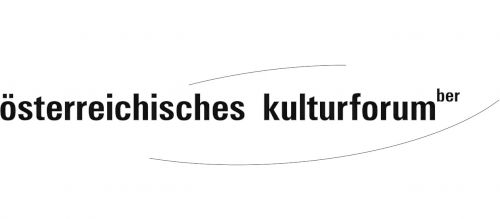
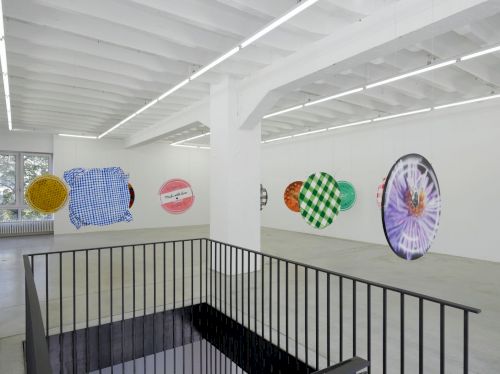
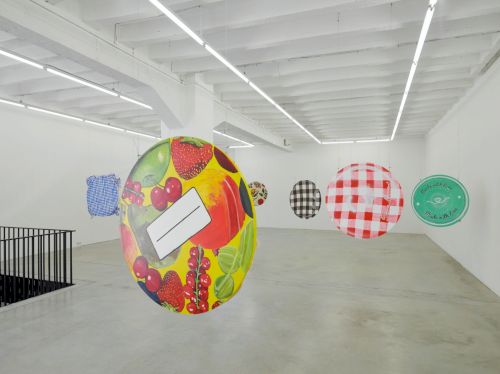
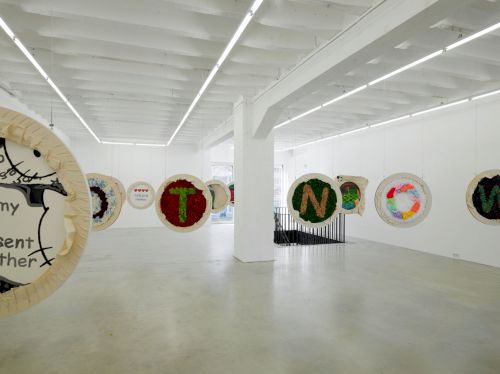
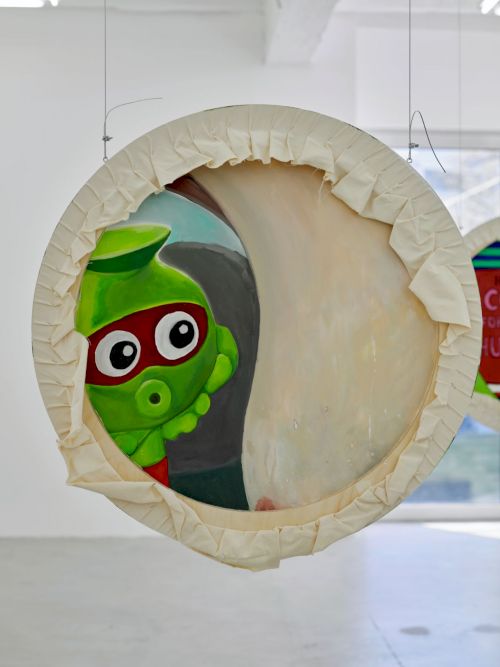
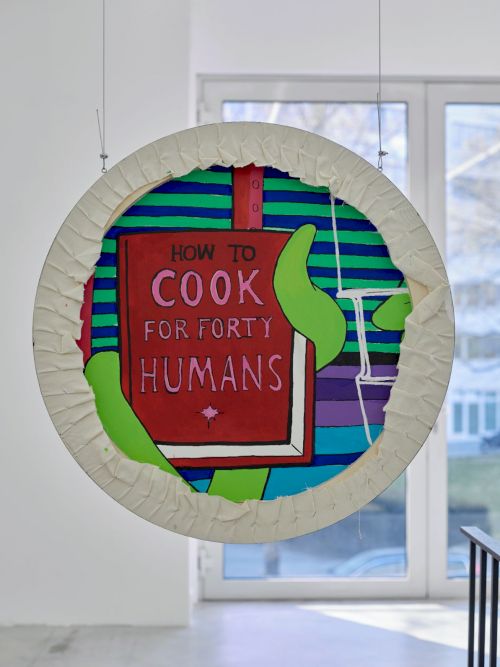
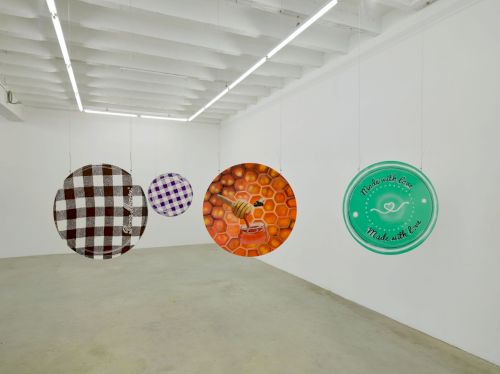



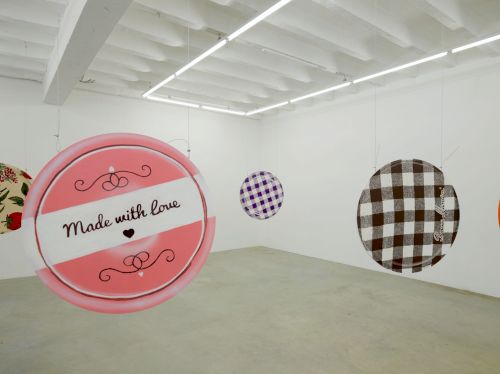
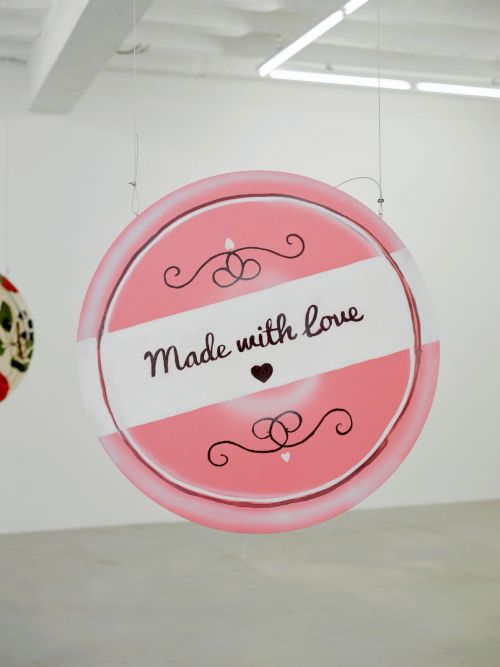

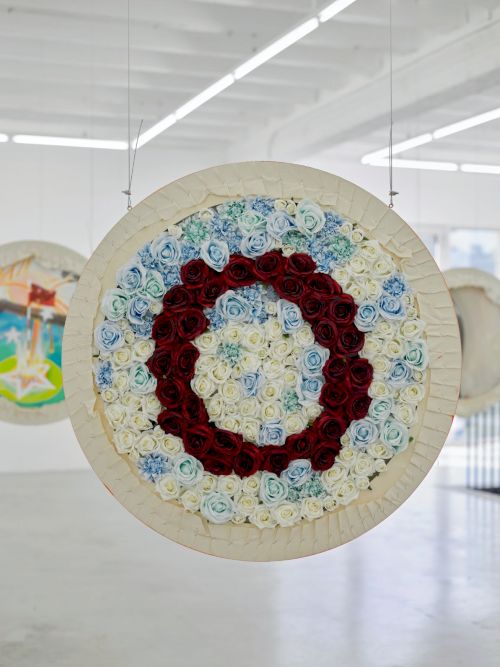
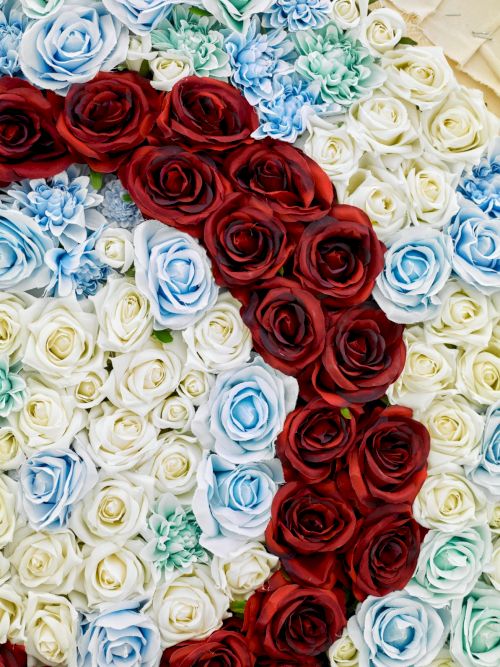
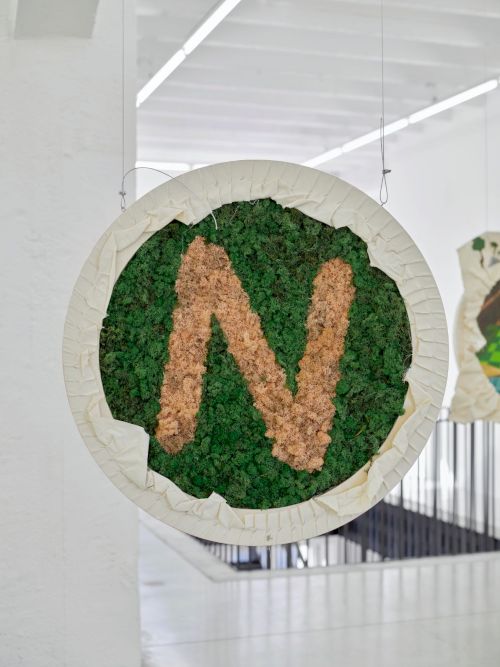
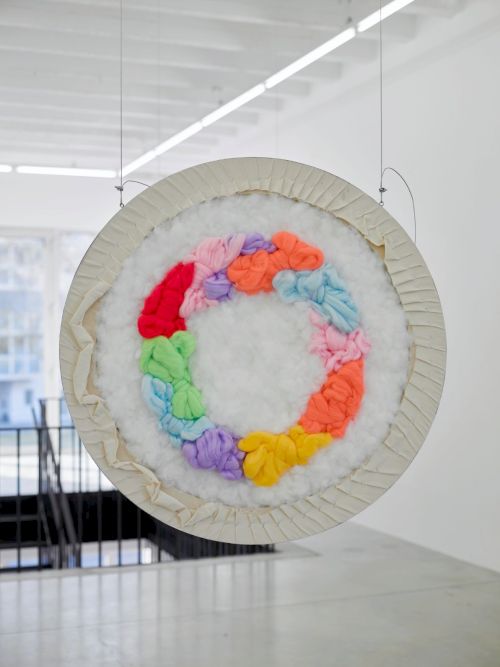
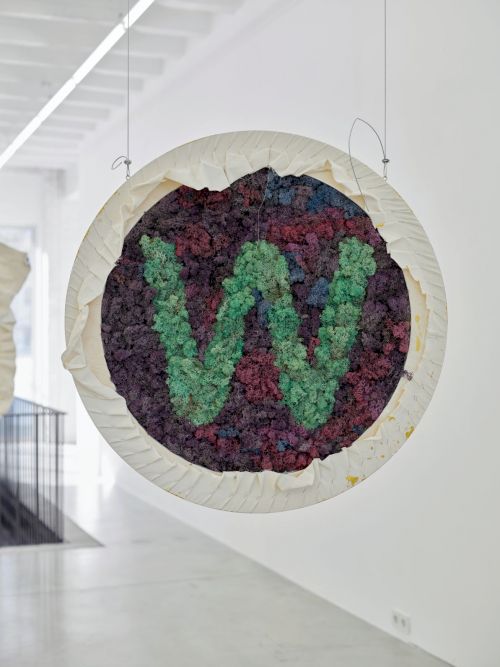
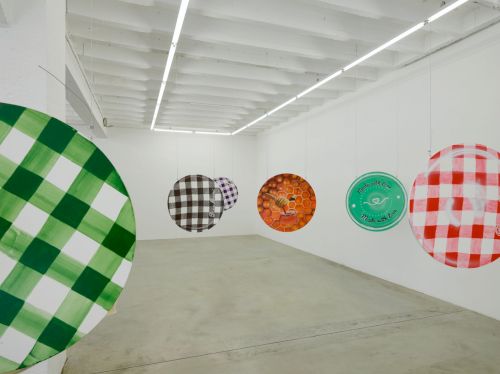
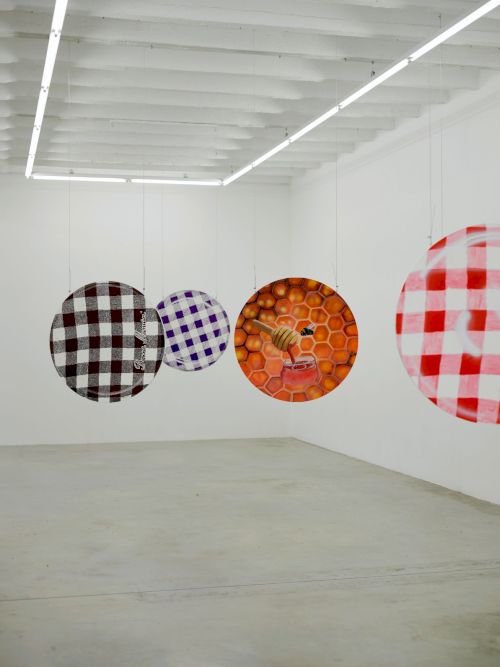
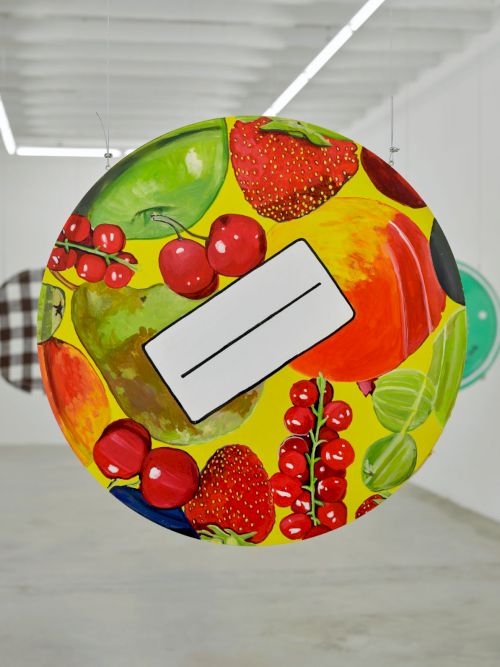
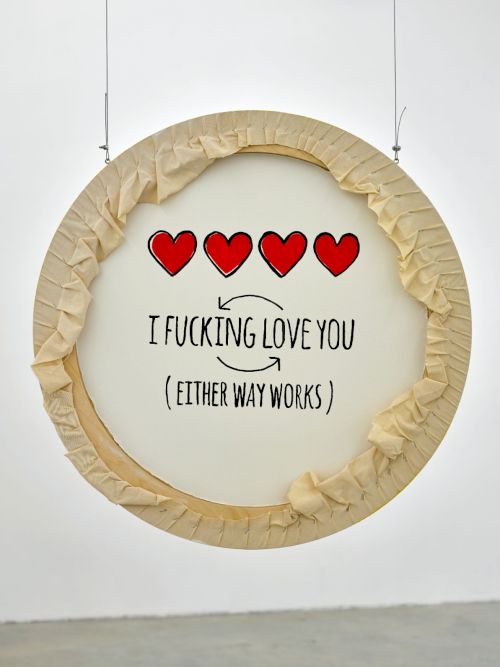
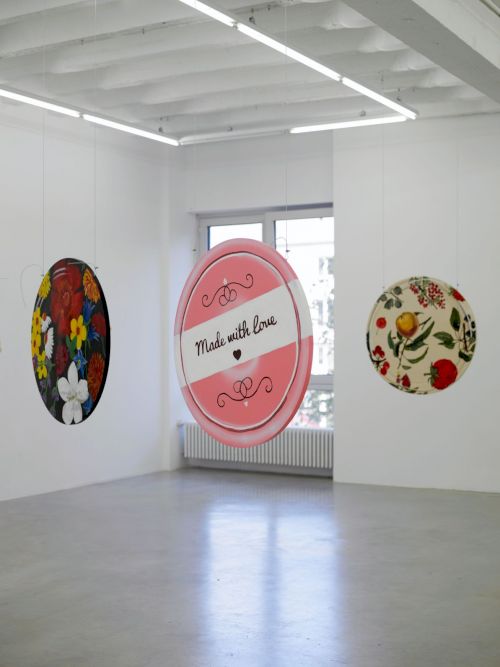
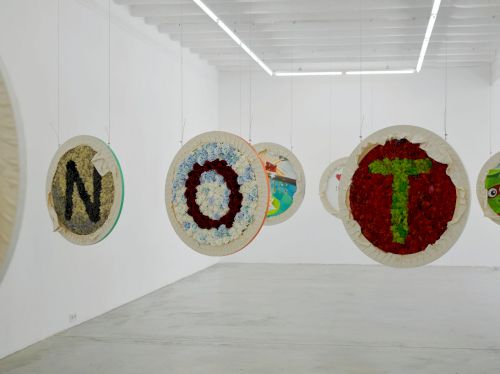
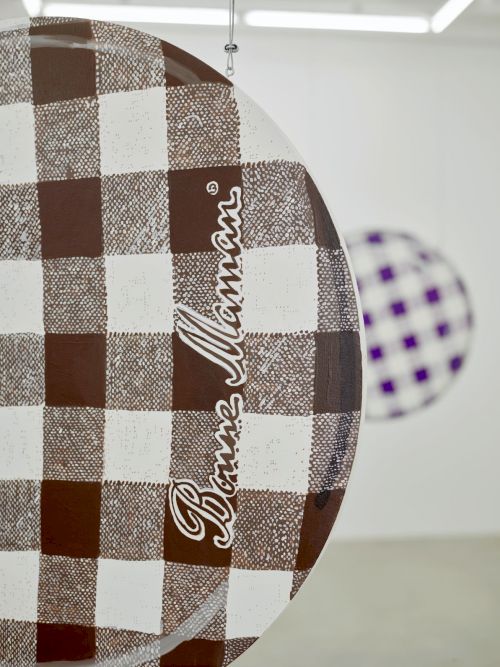


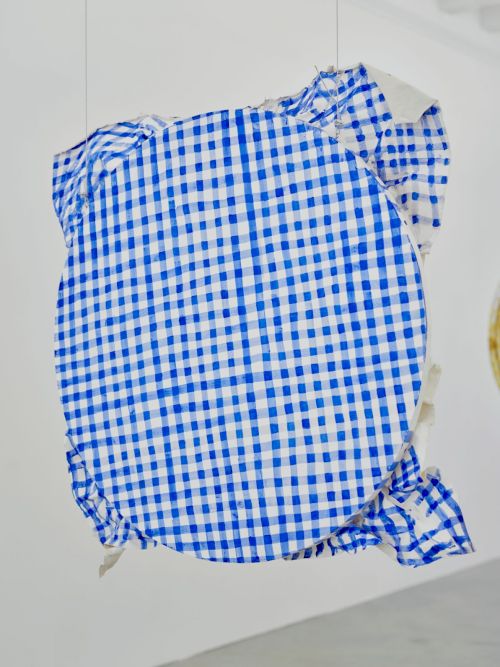
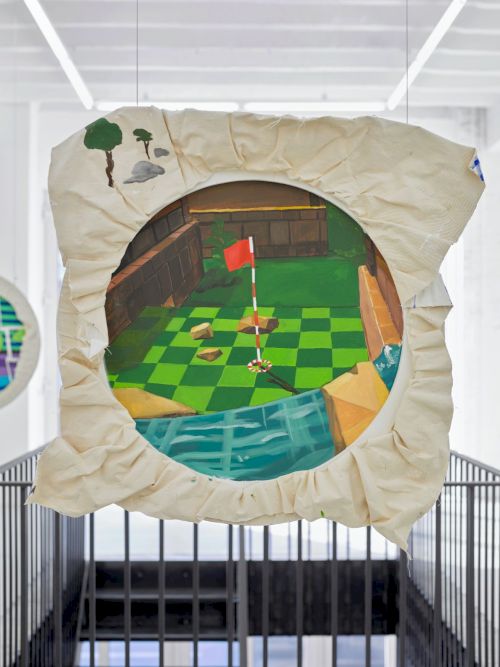
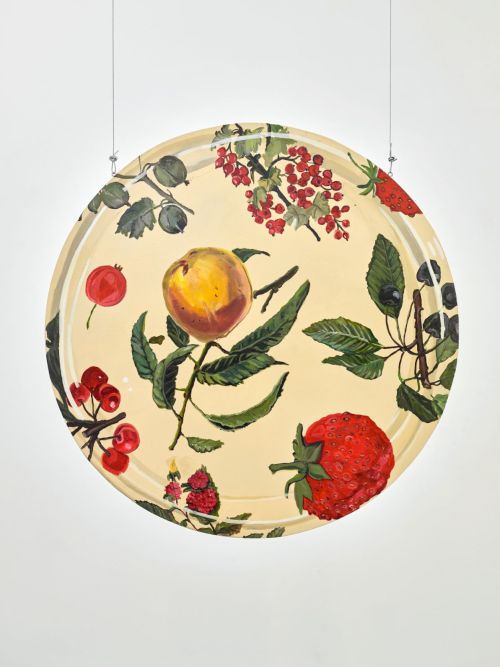
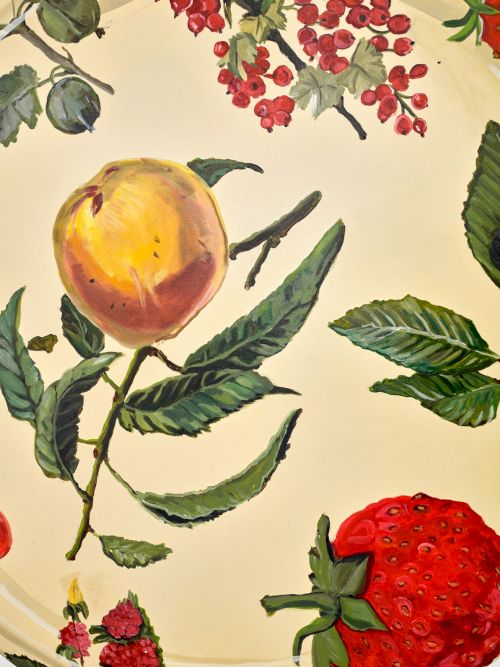
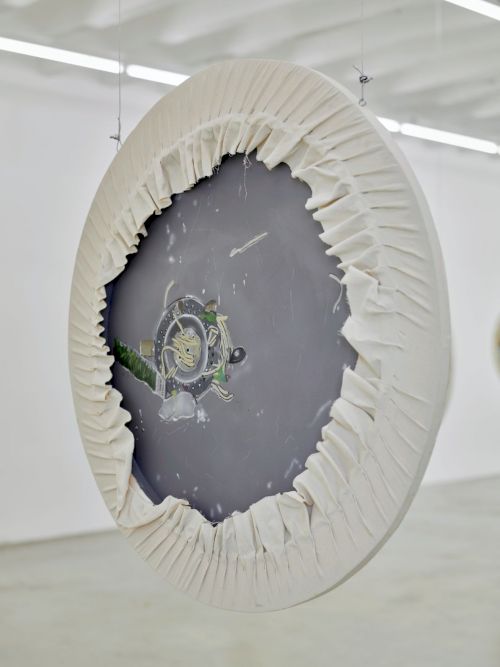



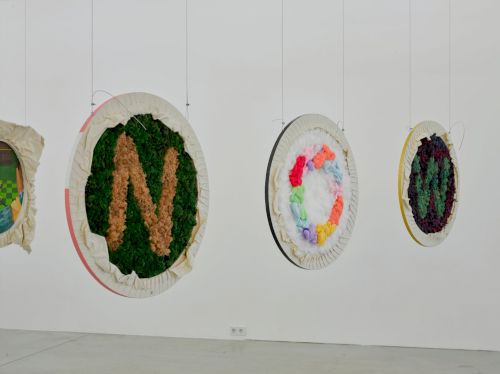
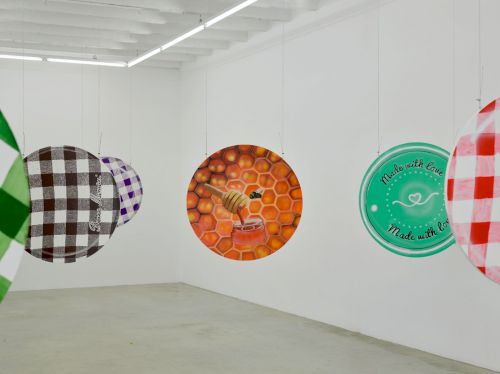
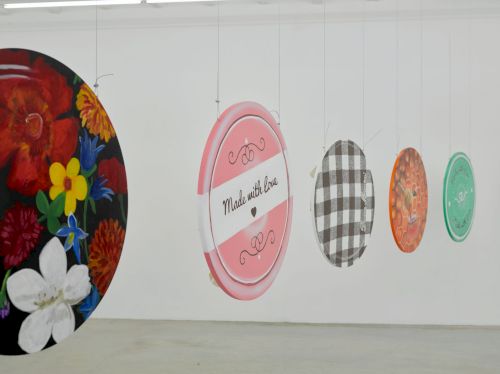


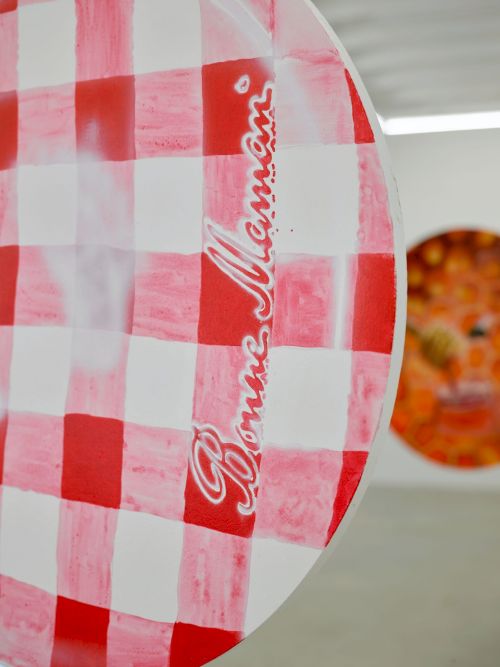

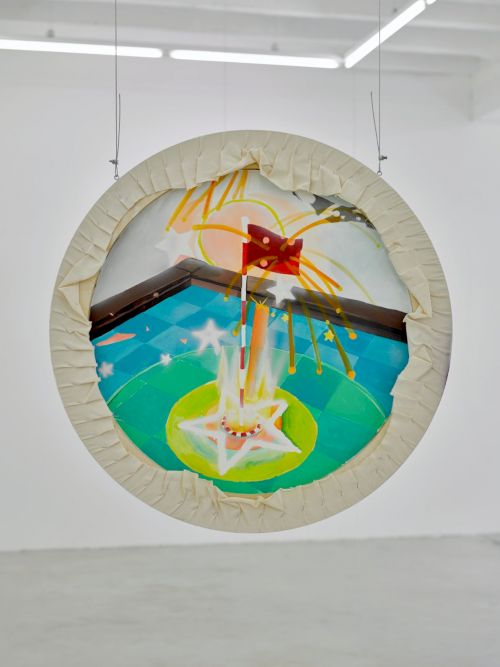
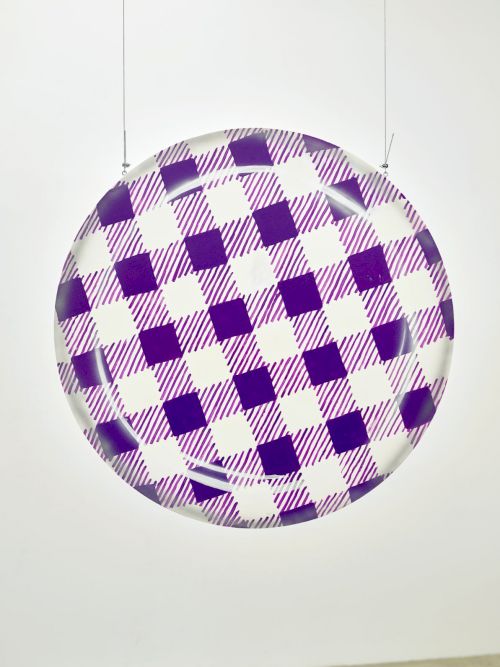
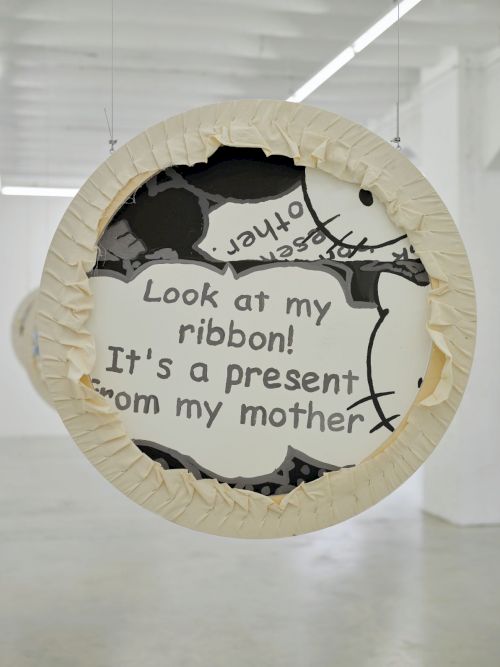
- Current
- Upcoming
- 2025
- 2024
- 2023
- 2022
- 2021
- 2020
- 2019
- 2018
- 2017
- 2016
- 2015
- 2014
- 2013
- 2012
- 2011
- 2010
- 2009